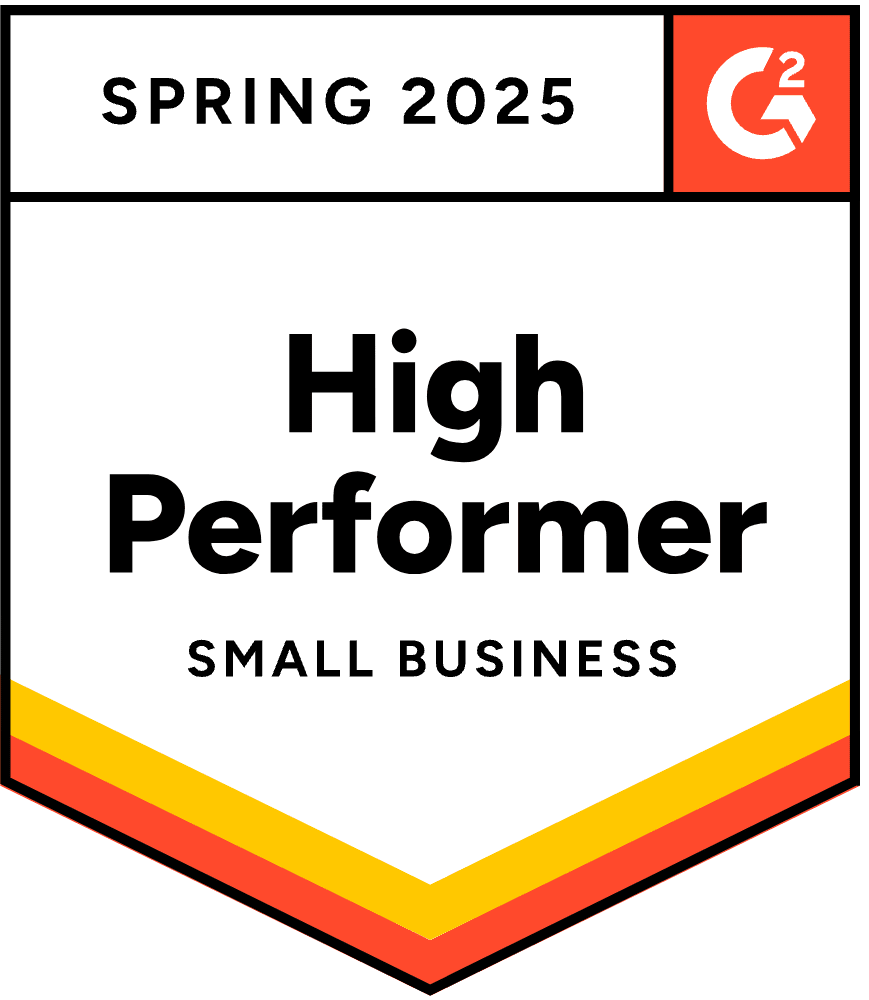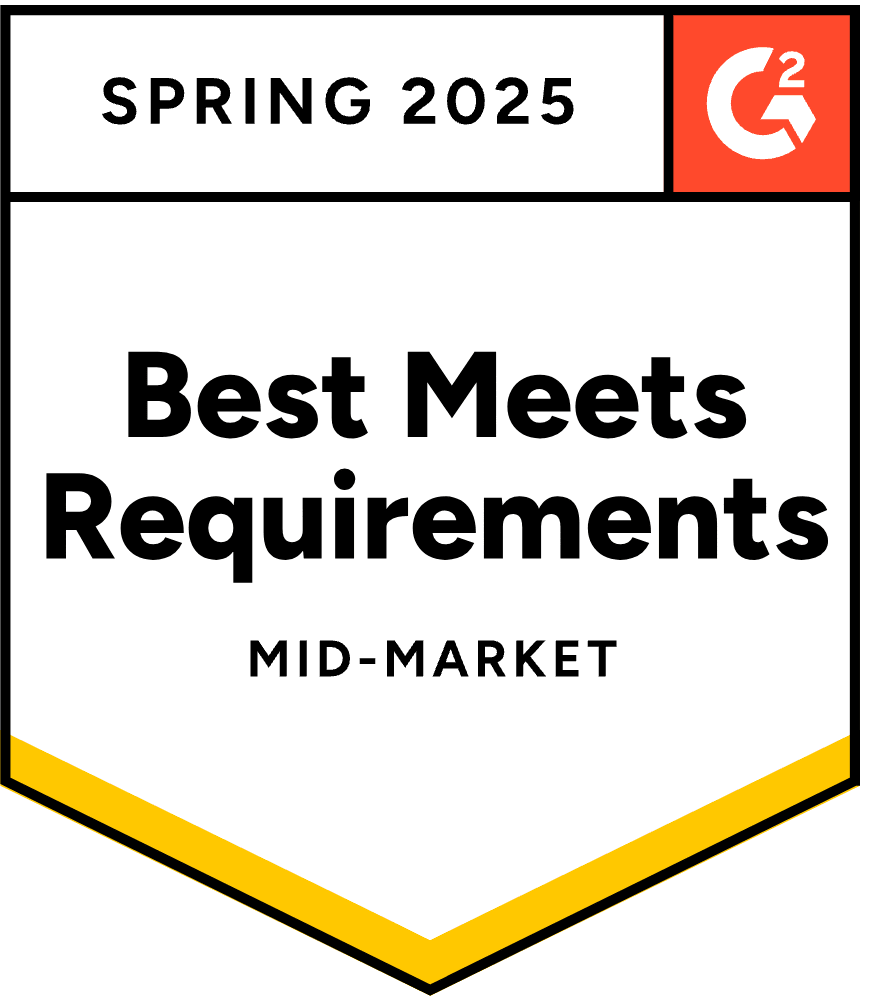- Blog
- Best Popup Personalization Examples & Tips to Boost Engagement
Best Popup Personalization Examples & Tips to Boost Engagement
-
Barbara Bartucz
- Conversion
- 6 min read
Table of Contents
Have you ever visited a website and felt like the popup was speaking directly to you? Maybe it showed you an item you’d just browsed or recommended a product that perfectly matched your tastes.
These aren’t just lucky guesses—they’re personalized popups, and they’re incredibly powerful tools for boosting engagement.
In this article, we’ll explore the best examples of personalized popups and provide tips to help you create your own.
Let’s dive in!
What is a personalized popup?
A personalized popup is a message tailored to an individual user based on their behavior, preferences, or interactions with a website.
Unlike generic popups, these messages have a way of feeling relevant and timely, creating a more engaging user experience.
By showing users content that speaks to their interests or actions, personalized popups feel more like helpful nudges than annoying interruptions.
Why should you use personalized popups?
Personalized popups are more than just a nice touch—they’re incredibly effective at driving results.
Here’s why:
- Higher engagement: Users are more likely to engage with popups that reflect their past behavior or preferences. Instead of an irrelevant message, they’re getting something that resonates with their current needs.
- Less intrusive: When a popup is relevant, it feels less disruptive. It’s not just another popup—it’s useful information.
- Increased conversion rates: By aligning with the user’s intent, personalized popups can nudge them toward completing a purchase, subscribing, or taking other actions that benefit your business.
- Better user experience: Personalization enhances the overall experience, making users feel understood. This targeted messaging can foster loyalty and keep them coming back.
What are the key elements of effective popup personalization?
If you’re looking to create popups that work, there are a few essential components you’ll need to master:
1. Targeting based on behavior
Trigger popups based on user actions like exit intent, time spent on a page, or scroll depth. For example, if a visitor is about to leave, a last-minute discount might keep them engaged.
2. Segmentation
Tailor your popups to different audience segments. Use demographics, browsing behavior, or past purchases to serve relevant messages—whether it’s a welcome offer for new users or a recommendation for returning customers.
3. Dynamic content
Personalize popups by including details like the visitor’s name, recent searches, or cart items. This makes the message feel more targeted and less generic.
4. Design customization
Align your popup design with the visitor’s interests or past interactions. If someone’s been looking at eco-friendly products, show them popups that reflect that theme, keeping the experience consistent and engaging.
8 best personalized popup examples
Now, let’s look at some brands that are using personalized popups to engage users in creative ways.
1. ParfumeLab’s browsing reminder popup
ParfumeLab enhances the shopping experience for returning visitors by displaying a browsing reminder popup.
This popup highlights products that the user viewed in previous visits.
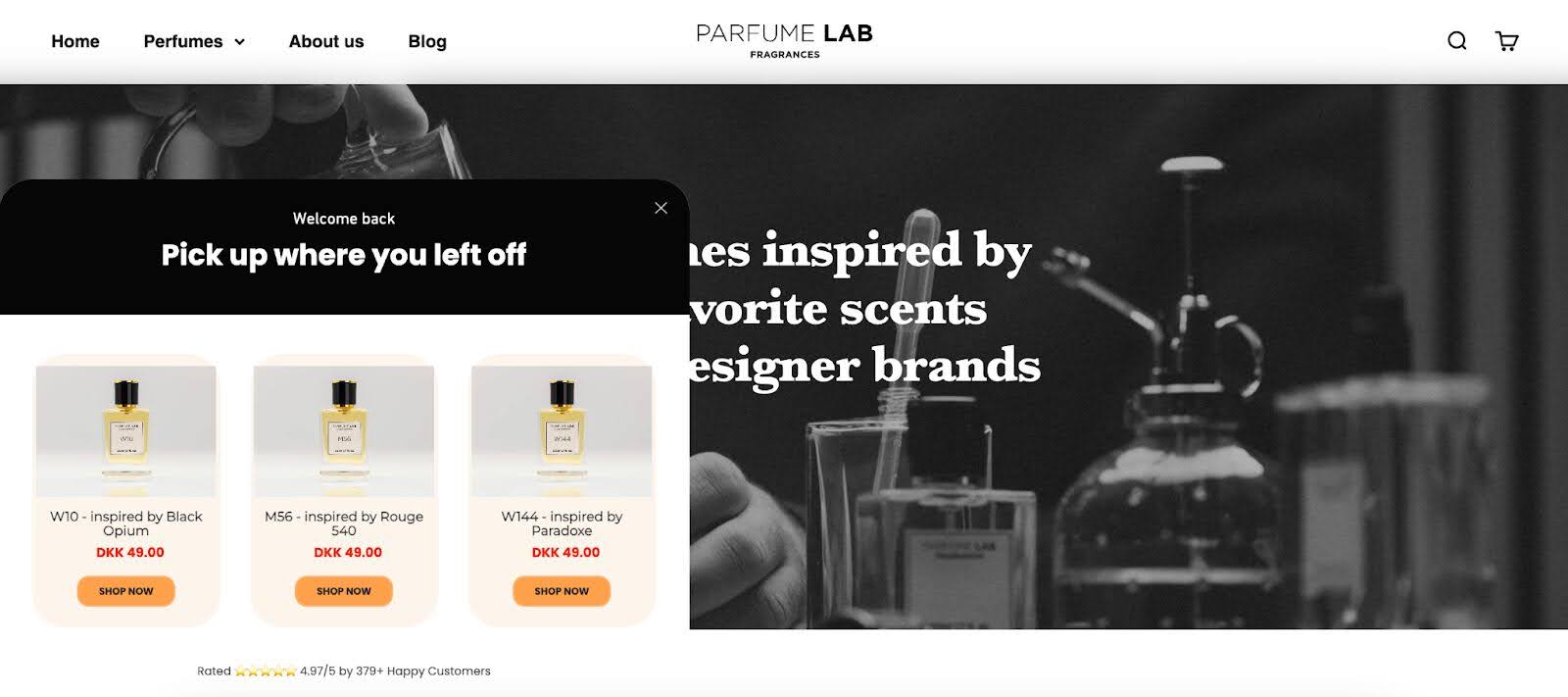
It’s a subtle nudge that reminds customers of the products they were interested in, increasing the chances that they’ll complete a purchase during their visit.
2. Millie n Me’s product recommendation popup
Millie n Me takes a more dynamic approach with a real-time product recommendation popup.
As users browse their site, the popup suggests similar items to the ones they’re currently viewing.
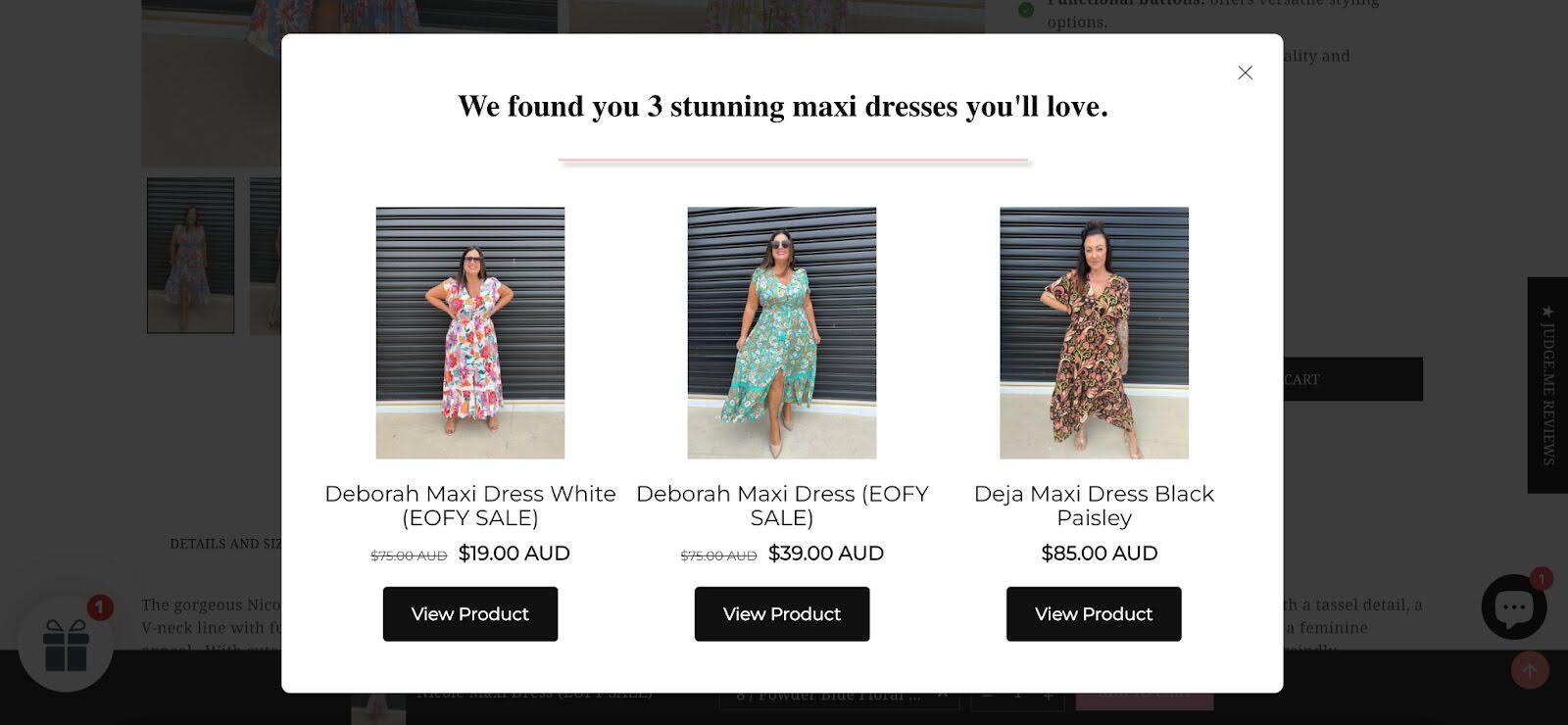
By offering relevant product recommendations at the right moment, Millie n Me guides users through a more personalized experience, helping them discover new products they might not have found on their own.
This not only enhances the user experience but also increases average order value.
3. Selzy’s blog popup
Selzy uses smart personalized content in its blog popups. Instead of showing a generic message, Selzy aligns the popup content with the specific article a visitor is reading.
For example, if a user is reading a post about holiday campaigns, the popup headline says “Boost your holiday campaign success.”
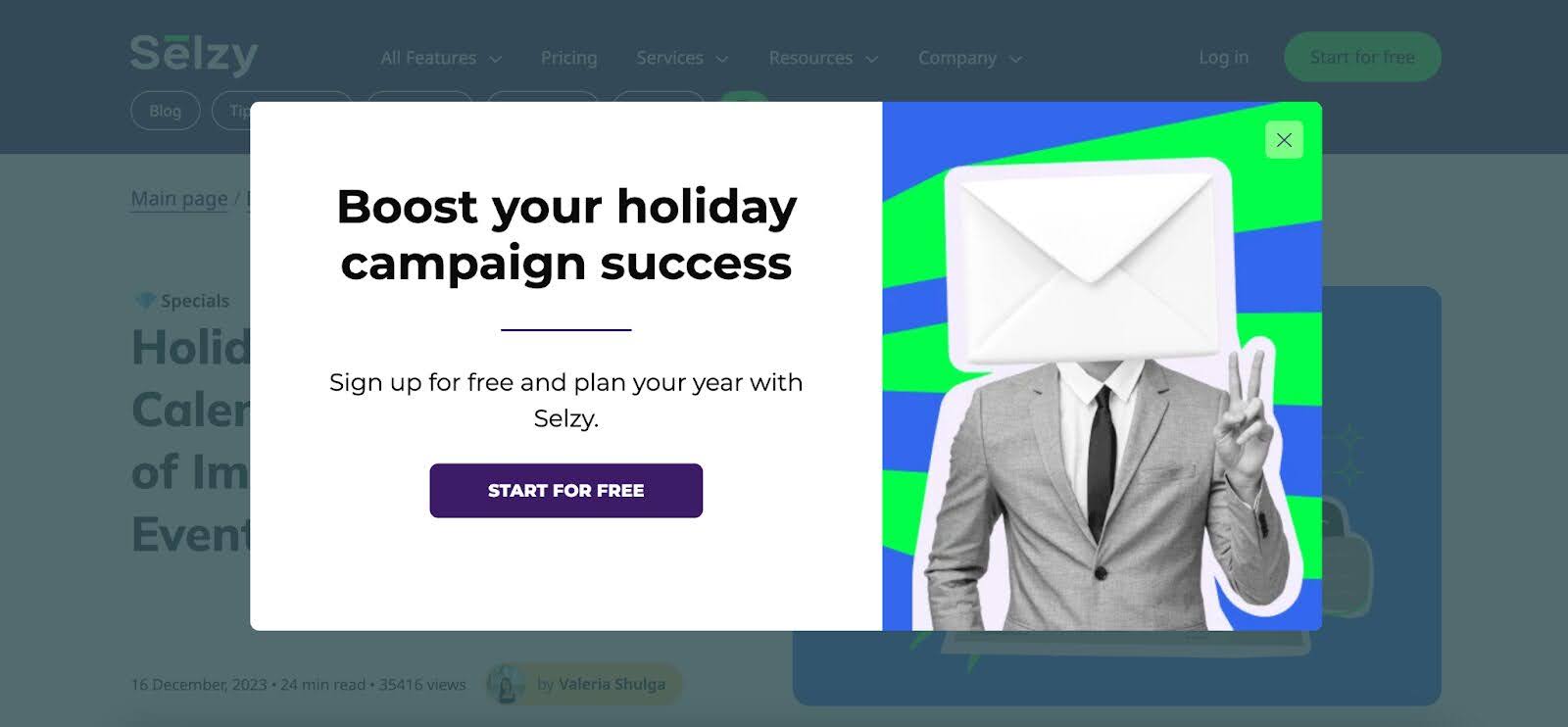
This makes the popup feel like an extension of the content, increasing the chances of engagement because it’s immediately relevant to the reader’s interest.
4. Craft Sportswear NA’s SMS popup
Craft Sportswear NA uses segmentation to ensure its SMS popups only target existing email subscribers.
These users are already engaged, so the popup serves as a next step in the relationship, offering an exclusive deal via SMS.
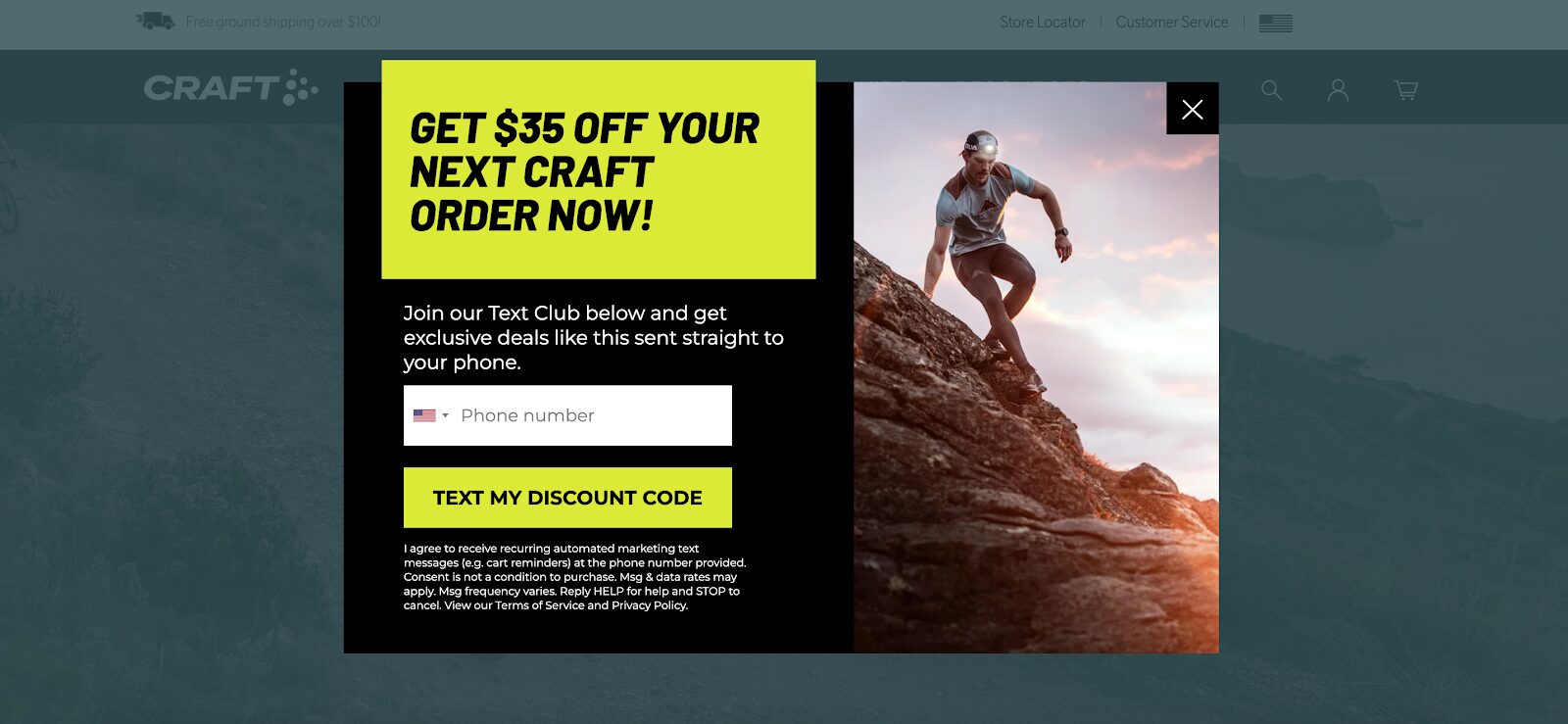
This level of segmentation avoids bombarding new visitors with too much too soon, and instead rewards the most loyal customers with special perks.
The key here is creating a sense of exclusivity while moving users down the funnel with a well-timed offer.
5. Olive Oil Lovers’ upsell popup
Olive Oil Lovers leverages an upsell popup that appears after a customer adds certain items to their cart.
The popup suggests complementary products, like pairing a premium olive oil with a gourmet vinegar.
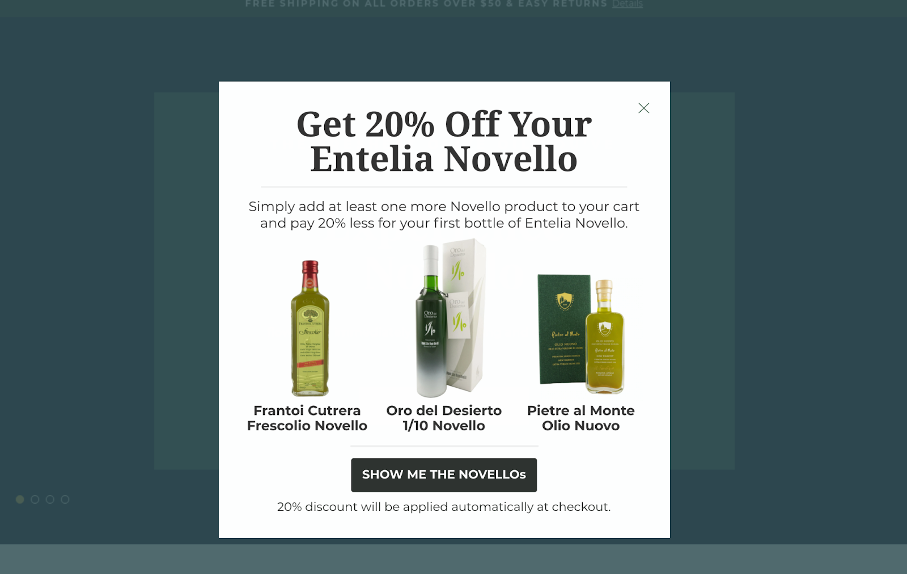
This approach is both timely and helpful, as it enhances the shopper’s experience by offering a more complete purchase.
The popup feels less like a sales pitch and more like a thoughtful suggestion, which makes users more receptive.
6. Kiss My Keto’s exit-intent popup
Kiss My Keto uses a personalized exit-intent popup to stop potential customers just before they leave the site.
In this popup, the copy mentions the exact product the user was previously looking at, serving as a reminder of what they might miss out on.
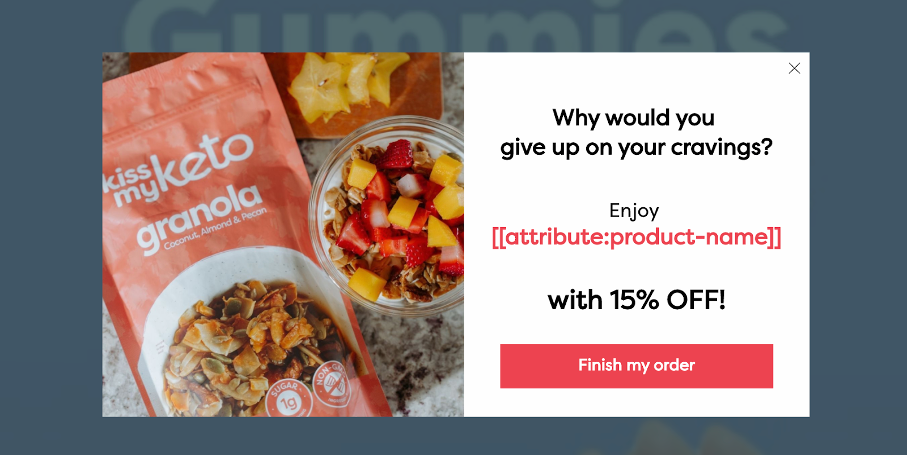
This last-minute nudge plays on urgency and relevance, encouraging users to reconsider their decision to leave empty-handed.
Showing a product the user has already expressed interest in makes the popup feel personal and highly targeted.
7. Vegetology’s welcome back popup
Vegetology makes returning visitors feel valued with a personalized “welcome back” popup.
This popup includes an exclusive discount on a new product bundle, creating a sense of loyalty and appreciation.
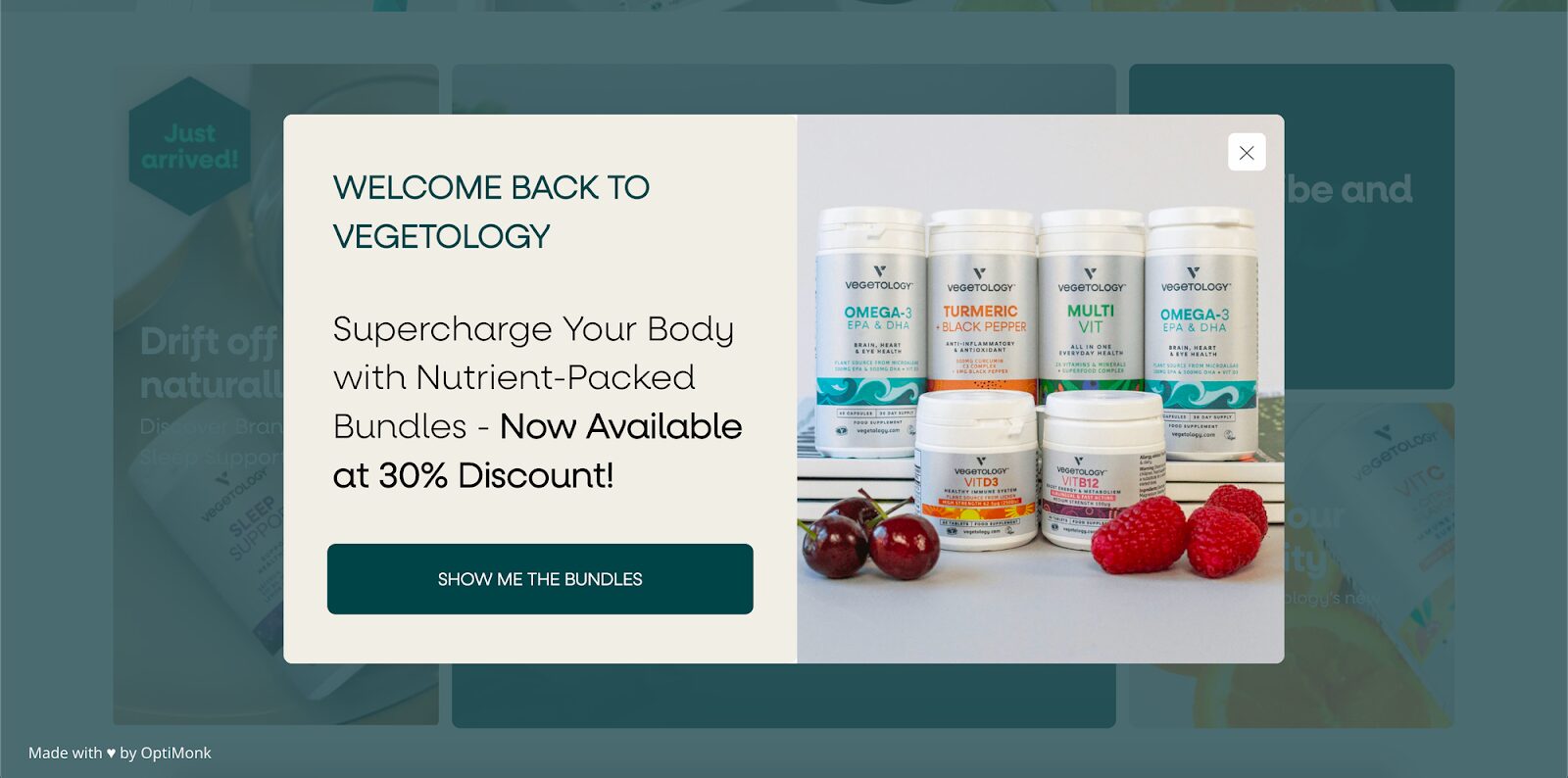
By recognizing repeat customers and offering them something special, Vegetology builds stronger relationships with its audience, driving conversions even more effectively.
8. BlendJet’s country-specific side message
BlendJet goes the extra mile by tailoring its side messages to the visitor’s location.
The popup offers perks like free shipping or special deals based on the shopper’s country, making the experience more convenient and relevant for international users.
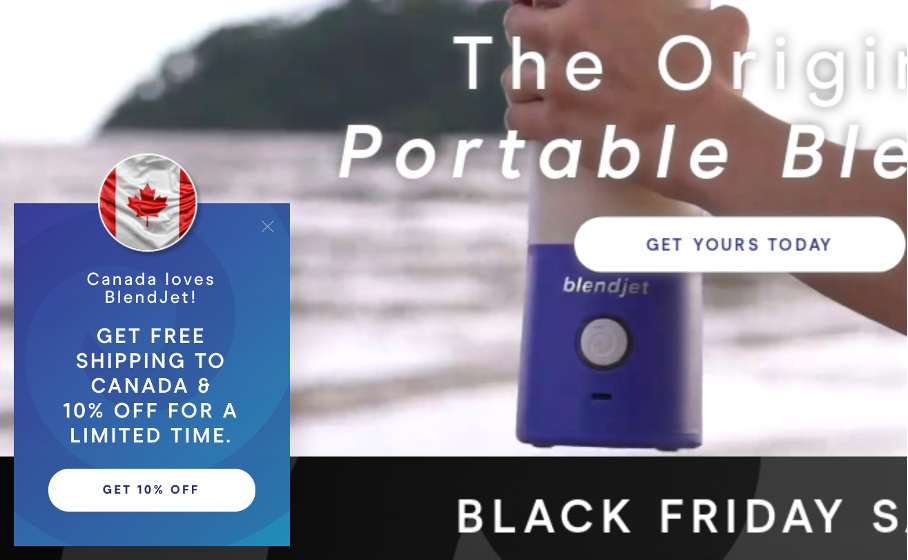
This localized approach helps remove any friction related to shipping costs or regional promotions, providing users with a smoother and more personalized shopping experience.
7 tips for personalized popups to make the most of your website traffic
Ready to create your own personalized popups? Here are some actionable tips to help you get the most out of them.
1. Use data to inform personalization
Data is the backbone of any successful personalization strategy. Leverage the insights from tools like Google Analytics to understand user behavior and preferences.
Use this data—like browsing history, purchase patterns, and demographics—to tailor your popups to each visitor.
For example, if someone has previously purchased sneakers, showing them a popup with matching socks or athletic gear could be just the nudge they need.
However, it’s important to tread carefully. Personalization is great, but being overly intrusive can backfire. Stick to subtle, relevant data points instead of overloading the user with too much personal information.
2. Keep the timing right
Timing is everything with popups. Pop one up too early, and you risk annoying your visitors before they’ve even had a chance to explore your site.
But wait too long, and you could miss out on engaging them before they leave.
Use smart triggers like exit-intent, scroll depth, or a timed delay to show your popup at the right moment.
For example, if a user is showing signs of leaving without completing a purchase, an exit-intent popup offering a discount could be just what they need to reconsider.
3. Focus on value creation
At the end of the day, your popup needs to offer something valuable to the user or it will be dismissed in a heartbeat.
Whether it’s a special discount, free shipping, an exclusive offer, or a helpful piece of content, make sure the value is clear and compelling.
A generic “Sign up for our newsletter” is unlikely to work unless it’s paired with a strong value proposition like “Get 15% off your first order.”
Remember, your popup is an opportunity to build a relationship with your visitors—use it wisely!
4. Test and optimize
There’s no one-size-fits-all solution when it comes to popups, which is why A/B testing is so essential. Try different popup designs, copy, offers, and triggers to find what resonates best with your audience.
Maybe a minimal design works better than a flashier, more colorful one.
Perhaps a free shipping offer outperforms a percentage discount.
The key is to experiment and keep optimizing based on the results.
When testing, don’t just focus on immediate conversions. Keep an eye on other important metrics like bounce rates, time on site, and email signups to ensure your popups are enhancing the user experience, not disrupting it.
5. Design for mobile users
With more people browsing on their phones, designing mobile-friendly popups is an absolute must. Make sure your popup is responsive and doesn’t take over the entire screen. Keep the design simple and minimal to avoid frustrating mobile users. No one likes a giant, hard-to-close popup that blocks the content they’re trying to see on a small screen.
Remember, mobile users often have less patience, so ensure your message is clear and concise.
6. Limit frequency
Nothing kills the user experience faster than being bombarded with popups. Set frequency limits to ensure you’re not overwhelming your visitors.
A good rule of thumb is to show a popup no more than once per session or once every few visits. This keeps your popups feeling helpful and relevant instead of spammy.
If someone has already engaged with a popup, you can adjust your settings to avoid showing them the same one again. Keeping the popup experience fresh and non-intrusive is the key to maintaining user trust.
7. Use AI-powered popups
If you want to take personalization to the next level, AI-powered popups are your best bet. Tools like OptiMonk offer popups that can adapt in real-time based on user behavior. These AI-driven popups automatically adjust the messaging, timing, and offers based on the user’s interactions with your site.
For example, if someone has been browsing multiple product categories, AI can tailor the popup to show recommendations based on their specific preferences.
This level of smart personalization can significantly boost engagement without requiring constant manual tweaking.
If you’re curious about how AI can make your popups smarter, tools like OptiMonk offer a great starting point to explore.
Wrapping up
Personalized popups are a powerful way to engage your website visitors, improve conversions, and enhance the user experience.
By following the examples and tips outlined above, you can create popups that feel timely, relevant, and, most importantly, helpful.
Remember, the key is balancing personalization with value—give users what they need when they need it, without overloading them with offers.
Ready to get started? Create your free OptiMonk account today and start building personalized popups that boost engagement and conversions!
Migration has never been easier
We made switching a no-brainer with our free, white-glove onboarding service so you can get started in the blink of an eye.
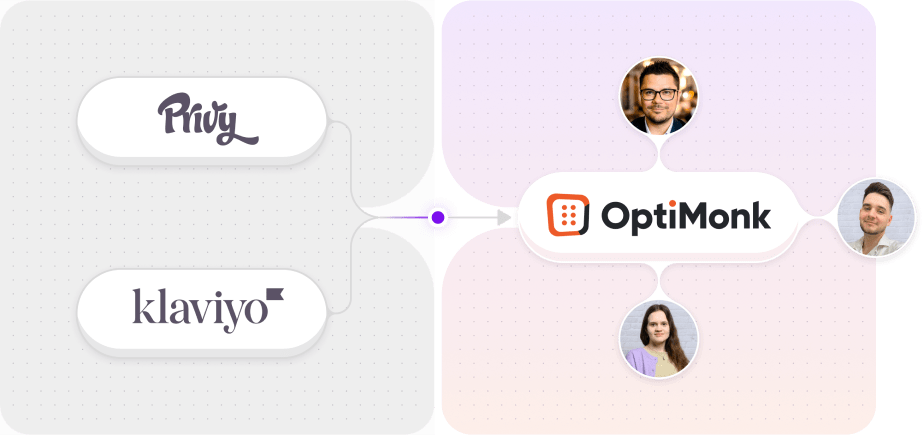
What should you do next?
Thanks for reading till the end. Here are 4 ways we can help you grow your business:
Boost conversions with proven use cases
Explore our Use Case Library, filled with actionable personalization examples and step-by-step guides to unlock your website's full potential. Check out Use Case Library
Create a free OptiMonk account
Create a free OptiMonk account and easily get started with popups and conversion rate optimization. Get OptiMonk free
Get advice from a CRO expert
Schedule a personalized discovery call with one of our experts to explore how OptiMonk can help you grow your business. Book a demo
Join our weekly newsletter
Real CRO insights & marketing tips. No fluff. Straight to your inbox. Subscribe now
Barbara Bartucz
- Posted in
- Conversion
Partner with us
- © OptiMonk. All rights reserved!
- Terms of Use
- Privacy Policy
- Cookie Policy
Product updates: January Release 2025

